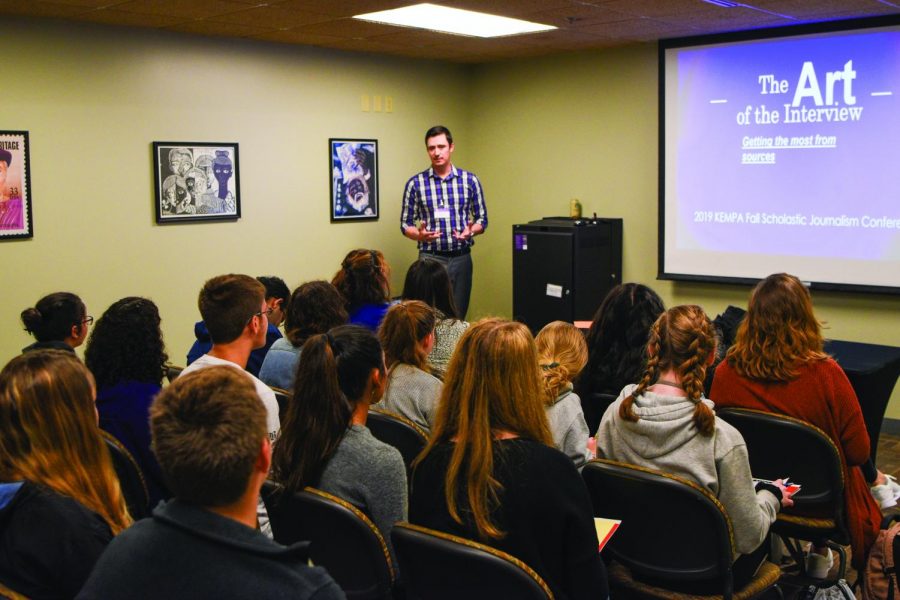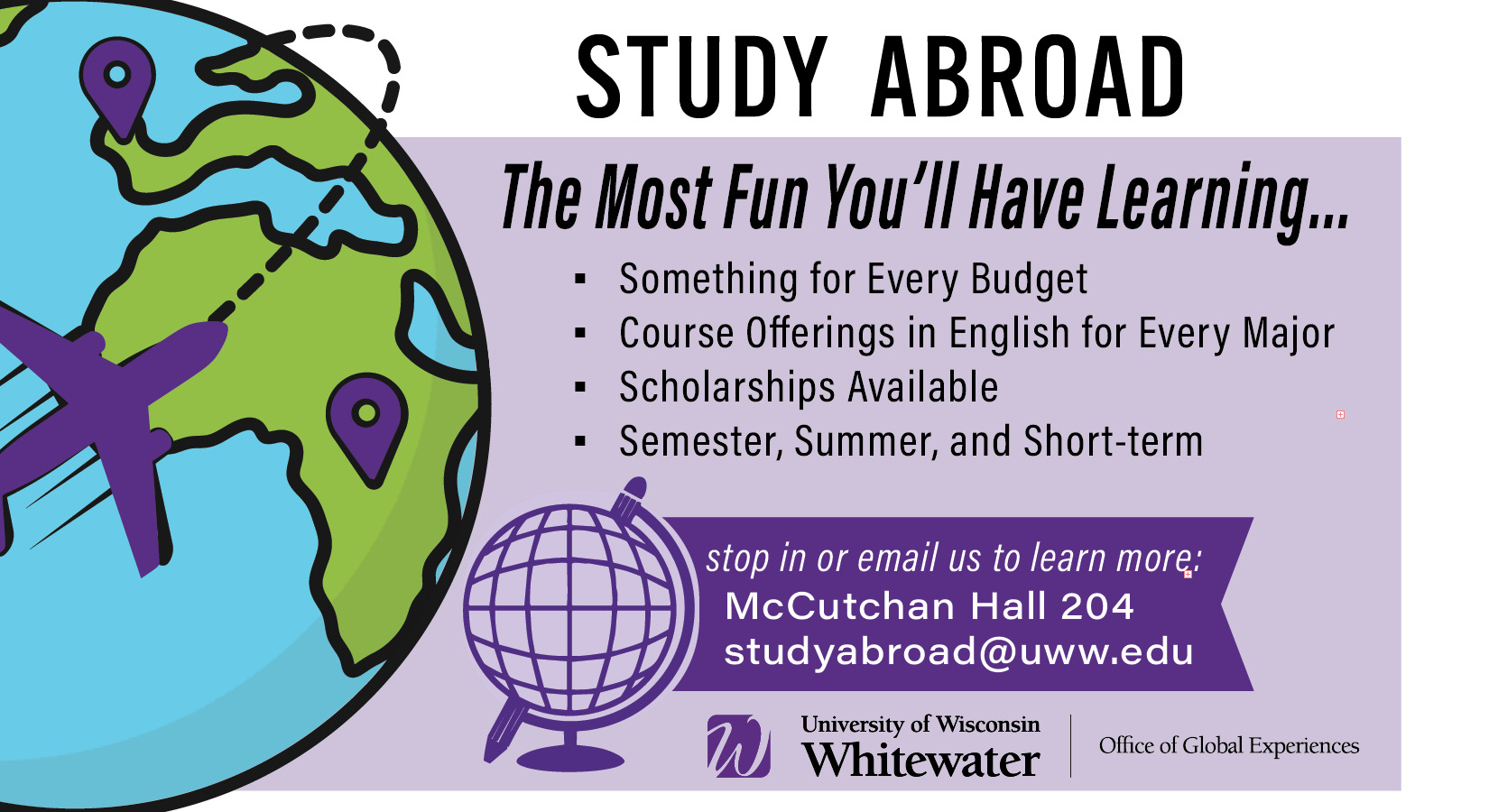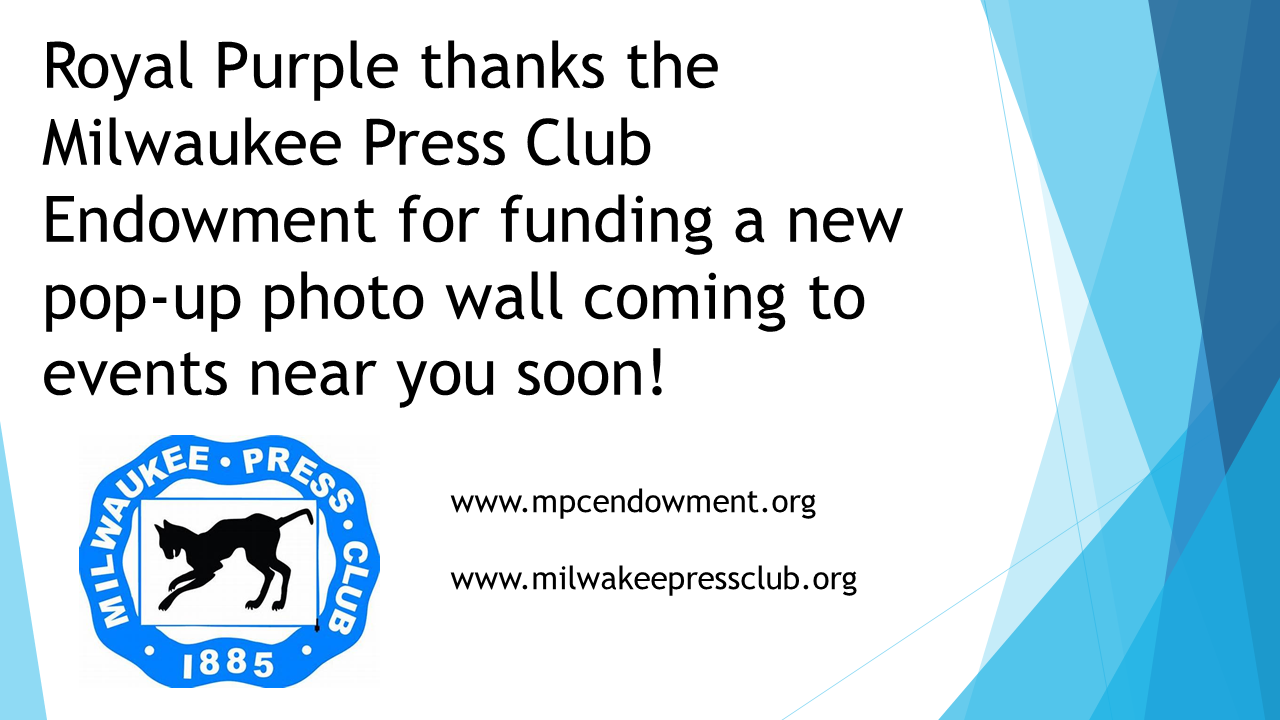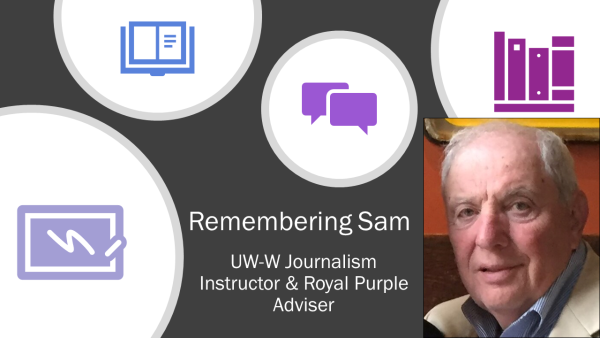KEMPA conference tackles freedom of speech
October 21, 2019
The Kettle Moraine Press Association (KEMPA) hosted their annual fall conference at UW-W on Friday, Oct. 11. Students from many different Wisconsin high schools had the opportunity to attend this conference and hear from professors, speakers and professionals in the journalism field.
“[The students] are learning about journalism at school, from their advisors. But, they’re always hearing from just one point of view,” said Linda Barrington, the executive director of KEMPA. “When they come here, they can hear from people who have different points of view, people in areas of expertise that may be different from the specific areas that their advisor has, and they get all kinds of new ideas.”
Barrington plans much of the event every year. She recruits speakers, picks the theme and works alongside the continuing education department at UW-W who work on the logistics of the event. Parking passes, flyers, folders and room reservations are just some of the things that the department handles when it comes close to conference day.
This year’s keynote speaker for the conference was Mary Beth Tinker, the plaintiff in the Supreme Court case Tinker v. Des Moines. Her appearances stressed how important it is for students, especially high schoolers, to have the ability to speak freely on important issues in a school newspaper.
The decision of Tinker v. Des Moines determined that students do have free speech rights in schools. However, there were three more Supreme Court cases that followed, limiting those free speech rights for students.
“Thirteen states have passed a law that protects student voices and student journalists,” Tinker said. “But, Wisconsin does not have the law. So it makes a big difference as we’ve been talking to students, because they [tell me] that they can’t write about climate change or lockdowns in schools. As far as a good journalism education goes, it’s not good to censor a student journalist.”
Tinker has spent much of her time touring the country, speaking at many different college campuses and high schools to learn more about individual school newspapers and what they are or are not allowed to print. However, she did not start off in the journalism field.
Tinker was a trauma nurse for many years before becoming a free speech advocate. Even in the nursing field, she saw the issues children and teens were having when it came to the lack of communication they were allowed to have when it came to policies that affected their health and lives.
“They were breathing polluted air and drinking water that had lead in it,” she said. “I [was] dealing with kids that got shot. I started thinking that these kids needed to stand up for their rights. They aren’t getting a good break in our society.”
Tinker went on to get two master’s degrees in nursing and public health, which led to her becoming an advocate for today’s youth.
“In public health, you learn to look at the population as your patient,” she said. “I started looking at young people, and thinking of what could help them to prevent injuries, lead poisoning and problems kids have.”
Tinker learned that the issues she was seeing in her emergency room connected to the world around her; climate change, gun violence, racism and war.
“About six years ago, I left the hospital and started a Tinker Tour,” she said. “[I am] going to schools, teacher conferences, school board meetings and lawyer conferences. A lot of it is connected to student journalism.”
Because of her past with the Supreme Court and witnessing the issues that children in society faced, Tinker took a stand and became an advocate for student voices.
Although much of the conference surrounded the issue of free speech, some of the presenters used their time to address fake news in today’s media.
“I’m [teaching that] you can use photographs to mislead people,” said Karl Boettcher, a representative from Visual Image Photography (VIP). “My biggest concern moving forward is the ability for people to create fake videos. The average person won’t understand that what they’re watching is fake. You can make a news clip, and you can have anybody doing or saying anything, and the average person will believe they did it.”
Big issues such as fake news and free speech are just a couple of the things that student journalists are dealing with today. There is always so much more to learn and more work to be done, but events such as the KEMPA conference are making sure that those issues are addressed in a proper manner.













